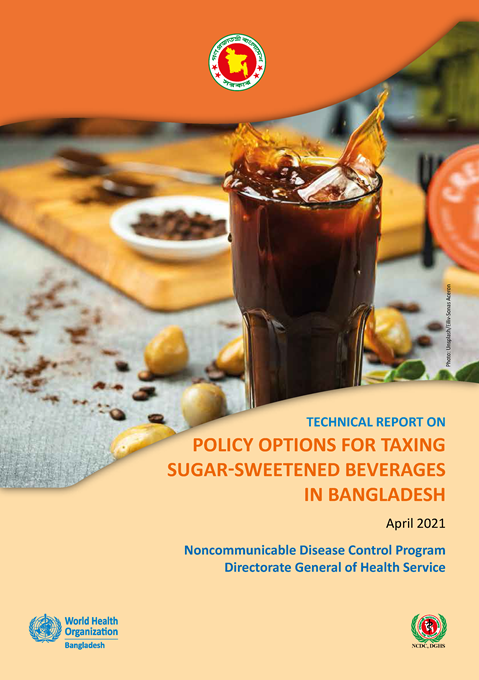Policy Options for Taxing Sugar-Sweetened Beverages in Bangladesh
Technical Report

Overview
There is ample evidence of the growing prevalence of overweight and obesity worldwide. In Bangladesh, overweight among adults increased more than four times – from 4.6% in 1975 to 20% in 2016. The STEPS survey conducted in 2018 estimated that 20.3% of adults are currently overweight in Bangladesh. In turn, obesity among adults increased from 0.2% in 1975 to 3.6% in 2016 — a 17-fold increase. The 2018 STEPS survey estimated that 5.5% of adults are currently obese in Bangladesh.
Among children aged 5 to 19 years, overweight increased from 0.3% in 1975 to 9% in 2016, a 29-fold increase or an annual average increase of 8.6%. Child obesity rose from 0 in 1975 to 2.6% in 2016.
Increases in overweight and obesity are associated with several health conditions, such as cardiovascular diseases, cancers, and diabetes. In Bangladesh, the prevalence of hypertension is partly explained by the recent rise in obesity. Diabetes prevalence has followed a similar trend as overweight/obesity, more than doubling from 1980 to 2014 for both males and females, reaching close to 8% as per the 2018 STEPS survey, and causing more than 26,000 deaths per year.
Overweight and obesity are major drivers of preventable chronic diseases, leading to increasing healthcare costs. These costs rise not only due to the many conditions caused by overweight and obesity, but also from indirect costs such as loss of human capital, job absenteeism, and presenteeism (reduced productivity while at work). Family costs, including suffering and lost earnings for caregivers, can also be significant though difficult to measure. A conservative estimate of such costs in Bangladesh places them at around USD 2.26 billion.
